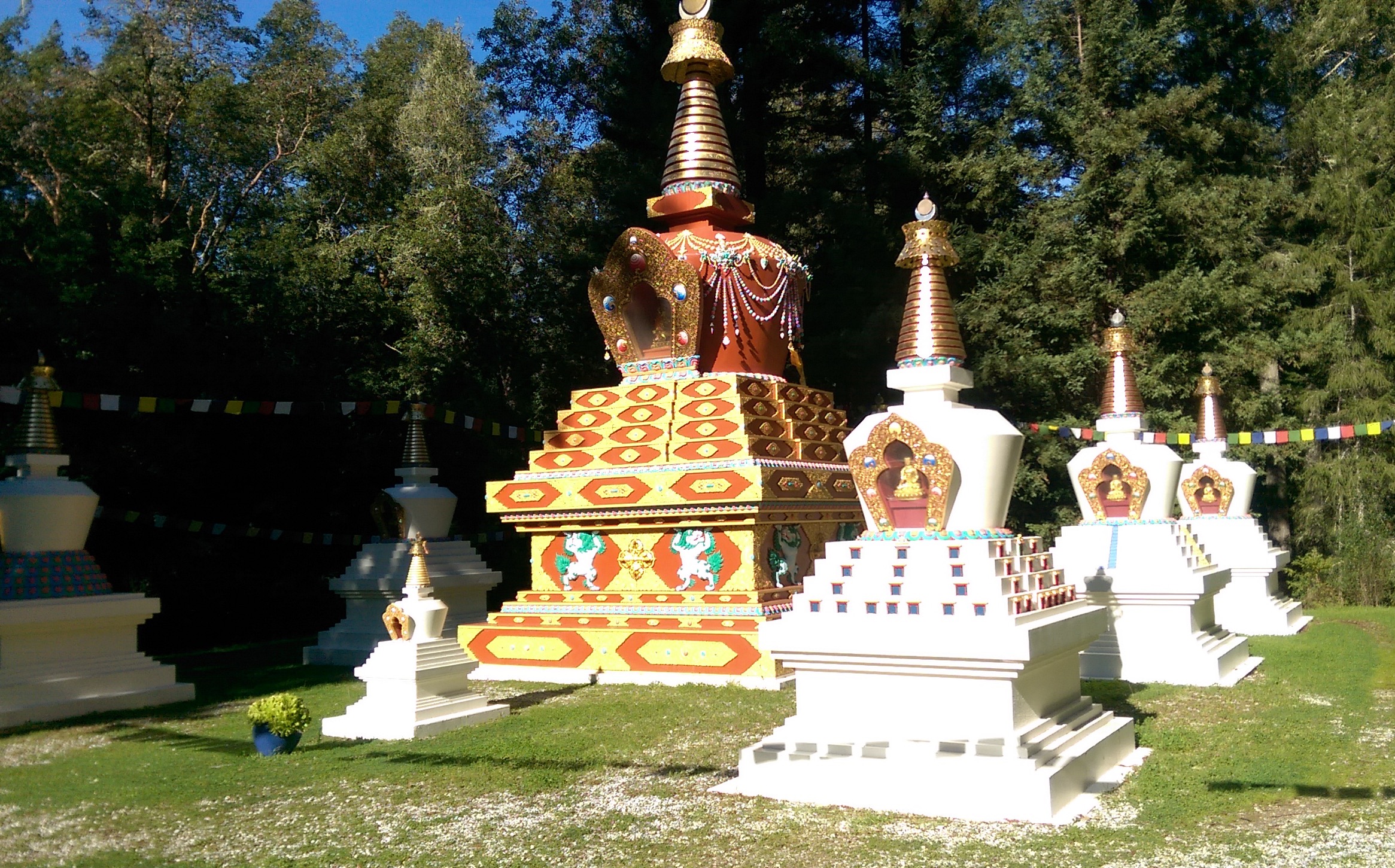Pema Osel Ling Retreat Center
Imagine yourself in a stunning temple below towering redwoods. You are surrounded by men and women who are meditating, praying and conducting powerful ceremonies exactly as the yogis of Tibet have done for over a thousand years. In a moment, cymbals crash together, drums beat, and wind instruments resound, vibrating the bones in your body, eliminating any tendency to slumber.
The people are kind, humble, quiet and sincere, yet possessing all the quirks of human beings. The guy next to you has completed seven years in cloistered retreat. The woman in front of you just walked in yesterday.

This is Pema Osel Ling, the Lotus Land of Clear Light, a rural retreat center in the mountains above Santa Cruz, California. By car, about an hour from San Jose—two hours from San Francisco or Oakland.
When I think of Pema Osel Ling two words come to mind: purity and devotion. The center was founded by late Lama Tharchin Rinpoche, an artist and in-depth practitioner who had completed many years retreat in Tibet, perfected his meditation practice, and eventually attained the break-through transformation known as realization. His teacher Dudjom Rinpoche had charged him with passing on every aspect of their lineage of teachings and practices, called the Dudjom New Treasures tradition, to present and future generations. His subsequent mentor, Thinley Norbu Rinpoche, asked him to do so in the United States. Rinpoche knew a center was needed, and in the early nineties he and his dedicated students established a foundation with seed money raised through a charity Mexican food stand.
Dudjom New Treasures Tradition
The Dudjom New Treasures (Dudjom Tersar) tradition started with an amazing visionary nineteenth-century meditation master known as Dudjom Lingpa. While roaming Eastern Tibet as a penniless yogi, many revelatory writings dawned in the mind said to have been concealed in rock, water or int he subtle essence of mind itself by the eighth century enlightened master Padmasambhava and other luminaries of the past. By all accounts, his students became amazing practitioners, and some are said to have attained complete enlightenment—Buddhahood itself—by ensconcing themselves in remote retreat huts and caves and engaging whole-heartedly with the meditations he taught. These writings were later elaborated on and augmented by Dudjom Rinpoche, regarded as his next rebirth.
What to See
The must-see things at Pema Osel Ling are the shrine room, locked when not in use, and the many stupas which hold bits of post-cremation bodily remains of past masters, as well as countless other objects such as mandalas, jewels, statuettes, and a central life-pole. Stupas are a near-universal feature of Buddhist centers everywhere in the world where Buddhism has gone, but the twelve stupas at Pema Osel Ling are exquisite examples because they were built according to the exacting instructions of the ancient texts by master artist who paid pain-staking attention to the outer finishing details. Those with faith in the power of great meditation masters to bless a structure through consecration ceremonies, or the spiritual effect of relics, will be interested to check out the “feels” near them. Nine stupas are arrayed in a secluded grove a quarter-mile walk down a peaceful forest access road. There are two elegant indoor glass-enclosed wooden stupas containing relics from Dudjom Rinpoche and his eldest son Thinley Norbu Rinpoche in the shrine room. The white stupa on the lawn outside contains relics of the founder, Lama Tharchin Rinpoche who passed away in 2013.
The central feature of the shrine room is an astonishing statue of Guru Rinpoche.
In the coming year I will profile more of my favorite real-life Tibetan Buddhist centers of practice and study so that you can determine if they are places you would like to visit.
